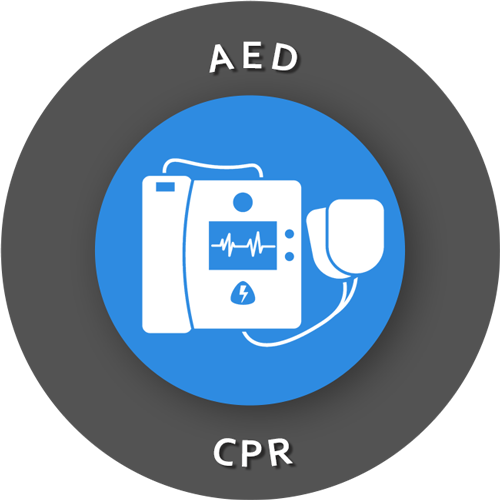 Ventricular Fibrillation which occurs in the out-of-hospital setting should be treated with CPR and an AED. Effective CPR and early defibrillation are the keys to positive outcomes for the unresponsive patient who is in ventricular fibrillation.
Ventricular Fibrillation which occurs in the out-of-hospital setting should be treated with CPR and an AED. Effective CPR and early defibrillation are the keys to positive outcomes for the unresponsive patient who is in ventricular fibrillation.
This ACLS scenario will usually involve one or two rescuers in an out-of-hospital setting. Ideal equipment would be an AED and a pocket mask. Rapid assessment and treatment using the CAB sequence of BLS should be performed as the first intervention.
CPR
CPR will be initiated if the patient does not have a palpable pulse or if it is undetermined if the patient has a pulse. Delaying CPR reduces the chances of a successful resuscitation thus, it is better to give unnecessary CPR than to delay CPR in questionable cases.
CPR may be needed after successful defibrillation since spontaneous rhythms after defibrillation may not always produce adequate perfusion for several minutes.
The AED
AED’s should be used when the following 3 clinical findings exist:
- Patient is not responsive
- Patient is not breathing
- Patient has no pulse
Most AEDs or External Automated Defibrillators provide voice instructions from the point of turning on the machine. The machine will perform the rhythm interpretation and will also instruct you when to shock the patient. It should also instruct you to resume CPR when necessary.
While using the AED, BLS should be maintained by giving high-quality chest compressions and using basic airway skills such as the head-tilt chin lift and mouth-to-barrier device resuscitation.
Emergencies are treated in the following order: Check patient responsiveness, activate EMS, and get the AED, then perform CABD’s of the BLS Primary Survey.